-
Posts
178 -
Joined
-
Last visited
Content Type
Profiles
Forums
Gallery
Events
Posts posted by guillemot
-
-
All I've ever heard was she was very fast but never read just how fast "very" was.
In those days fast was maybe 15 knots.
-
-
-
The scuppers were, as far as I can find out, rectangular slots in front of each bulwark stanchion, fairly typical for the time
-
Good work. It's one of the really good things about working in wood, you can nearly always fix it!
-
Interesting stuff on Chrome, Keith. Generally Chrome Oxide 3 is the only one painters are interested in....I do try not to eat it of course...
 . Mixed with Cobalt Blue (another one best not ingested...) it finds it's way into a lot of my seascapes.
. Mixed with Cobalt Blue (another one best not ingested...) it finds it's way into a lot of my seascapes.Jesse: There are a lot of modellers acrylics in useful shades of green.
-
I wonder if anyone has ever attempted simulated toperdo worms. Drill holes, cook spaghetti and let it dry wiggly, then glue in the hull holes. ICK

That's just sick

-
Chrome Oxide is a medium, rather earthy green. There's a thumbnail here link. Here's a pic of a model of Pride of Baltimore, with a nice green bottom.
HTH
F
-
I was trying to read up on weathering ship models last night. Found a lot of discussion but not real instructions on exactly how to do it.
I know what you mean. It's so often over done as well. Personally, I think the black above and varnished wood below, or if you want to paint it, a chrome oxide green wood do very nicely. Oddly enough I was reading about a Welsh shipbuilder who always painted his ships green below the waterline. So there's a precedent.

-
You could always 'weather it' .....
-
-
Yes, the upper mast has a square bottom bit, then gets its corners chamfered and is round as it goes through the mast cap. Which is why, if you're making your own masts, you start with square sectioned wood. It's not terribly difficult to do, you'll find tutorials all over the web for it.
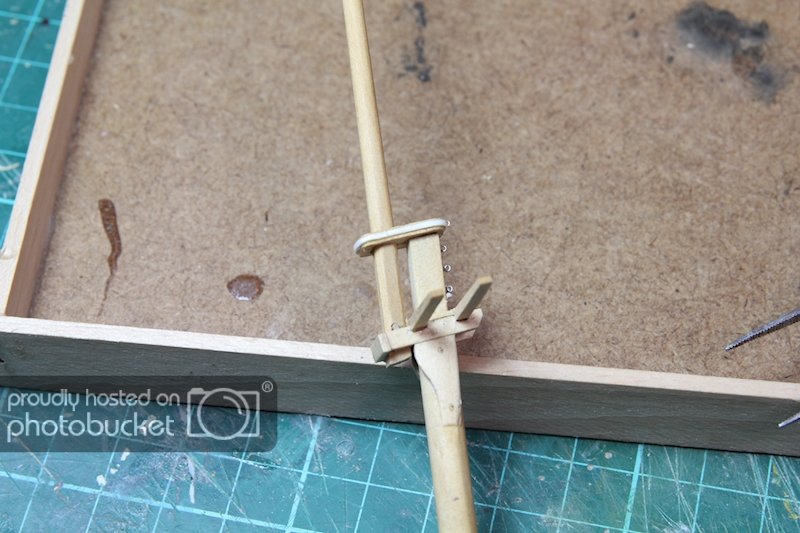
-
Hi,
There should be 'cheeks' under the crosstrees which support them.
Sort of like this-ish
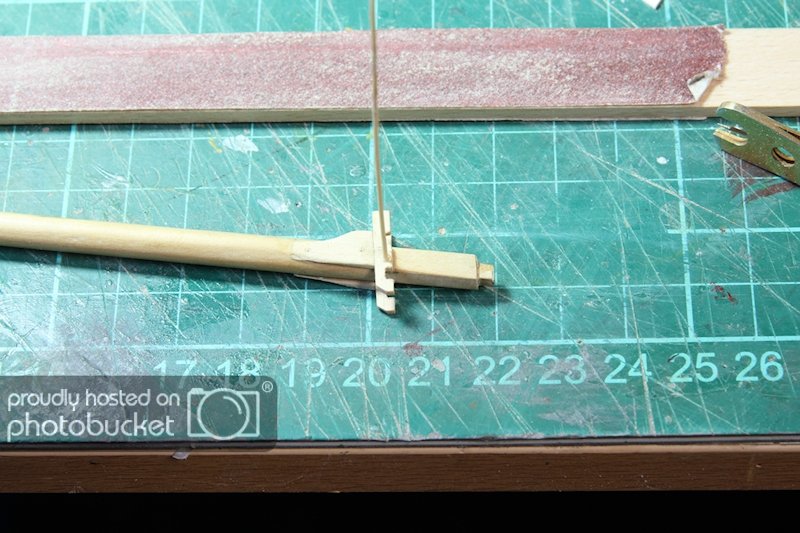
Incidentally, I think I made mas head a bit short...c'est la vie. Here's a link to nice shot, probably have to scroll down, of the mast head of a 1/24th scale Brig o' war. but it's a good clear shot and shows the squaring off etc. to good advantage.
HTH,
F
-
OK, Here's what I was working from. This is a scan from MacGregor's "Fast Sailing Ships". I don't know how far apart AL suggest, but this should help, I hope.
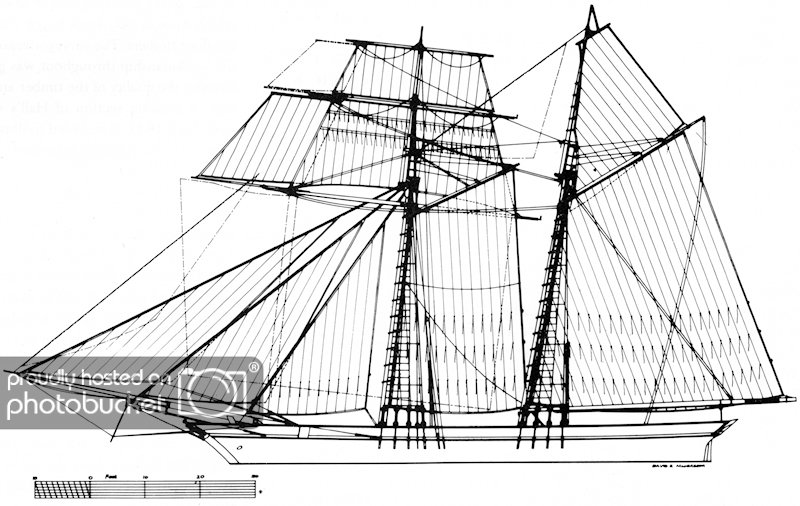
Here's a shot of my foremast doubling. I'm not going to guarantee that it dead right, particularly the top (I don't know if she had a top or just cross trees.
Certainly though, the mast was square from the cross trees to the mast top. and the sides, lower down, would be flattened to take the cheeks.
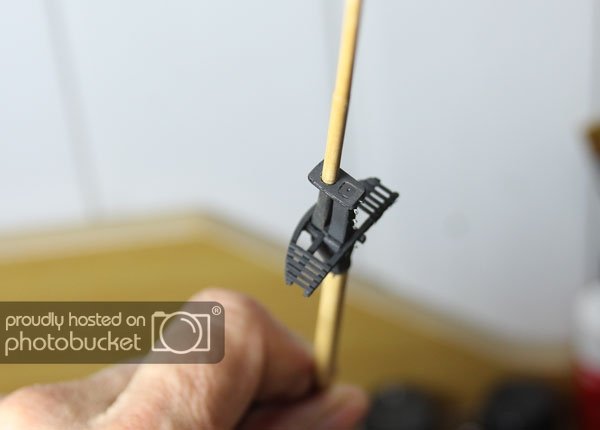
-
Philip Reed uses copper painted paper, looks surprisingly good...lots of fun cutting out all those little plates!
-
Incidentally..... Here's the model that's in the Aberdeen Museum. This is the colour scheme I'd probably have gone for if I hadn't been doing a waterline
http://www.aagm.co.uk/thecollections/objects/object/Model-of-First-Aberdeen-Clipper--The-Schooner-Scottish-Maid?l Looks damn fine to me. Hope you're feeling better soon, I've been through one really nasty illness - the treatment was worse than the illness and recovery took some time. As the weather warms up into Spring I find the sun coming back really helps. I've had a low grade chest infection since Christmas - we've had a really wet cold winter here in mid-Portugal. The weather guessers reckon next week will be sunny. It would be nice.
-
If you mix your own black, like wot I was taught as an Art student you can modulate the shades and warmth of blacks - Burnt umber and ultramarine or cobalt blue will do nicely, oils with a bit of liquin medium to speed up the drying is a good way to go - cobalt blue is pretty expensive though....and toxic so don't eat it! Like a stupid rat did to one of my tubes.....bet he regretted it.
F
-
-
Yeah, I wasn't sure about green - black is safe
 In the repro of the painting of her, the figure head looks white, but..... as to sail colours, who knows? They might have ended up giving her red, mighty unusual on a crack packet, but hey.
In the repro of the painting of her, the figure head looks white, but..... as to sail colours, who knows? They might have ended up giving her red, mighty unusual on a crack packet, but hey. -
Yep, it's a bugger. Thinking about colour schemes...There's this:http://www.bbc.co.uk/ahistoryoftheworld/objects/pPlaiHnbS-ahaUtkeff-iQ . Notice though, that the model was built in 1880, so may well depict the ship later in it's life. The red sails and maybe a coppered hull are interesting - as is the green hull. I was tempted to do mine with an Aberdeen green hull, but I have a hunch that came in later. As to coppering...She spent her life in the North Sea, not a lot of tropical wood munchers in our cold waters and so coastal schooners weren't, unless they were going to the Medi or the Caribbean. Colours? I haven't seen the kit myself, and went for cream gunwhales and varnished wood. One of those cases where 'who knows?'

F
P.S. Hope you're felling better Jesse.
-
Nice work. I have certainly seen pictures, even a photo or two of windlass sides being made up of two pieces. The log bit was all of a piece and so constructed sides would make sense.
Sorry to hear you have Lyme disease, it is known here in Portugal, and with all the wild boar in the forest and flocks of sheep around here (mid Portugal) ticks are a real nuisance, and potential threat.
Hope you're felling better soon.
F
-
Love the use of a flea comb to simulate planking. That's thinking outside the box! Just cameto your build and am catching up! Beautiful work, mate.
One of the big problems with researching British built ships is the fact that Britain's shipyards were repeatedly bombed during WWII. I really would love to see plans of some of the beautiful Clipper Schooners built by Whites of Cowes for yachts and opium clippers. Their drawing office got bombed and burned, same goes for Hall and quite a few others. War destroys so much history.
-
-
Hi, She's finished. Last bits to do were the anchors which were silver and soft soldered together from bits of copper.
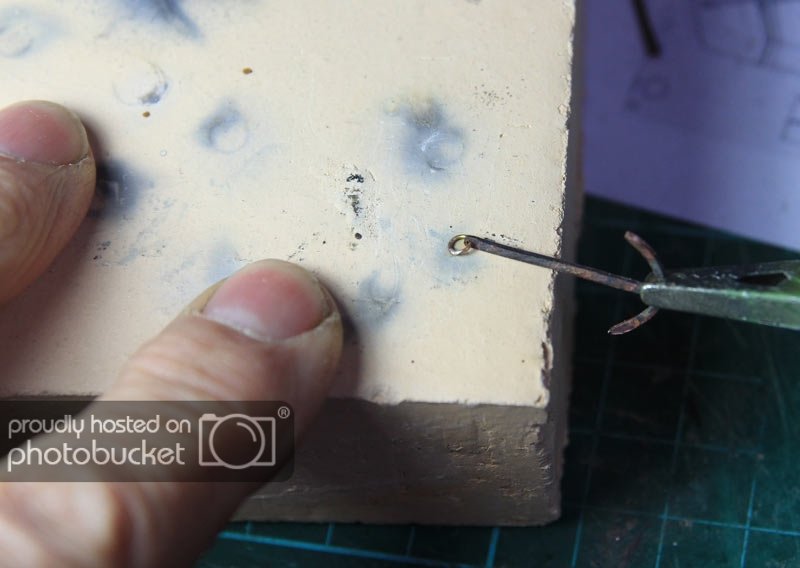
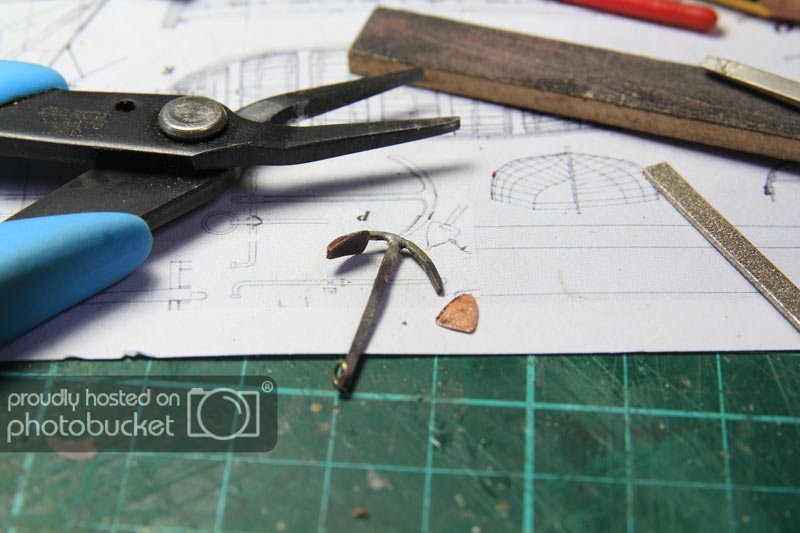
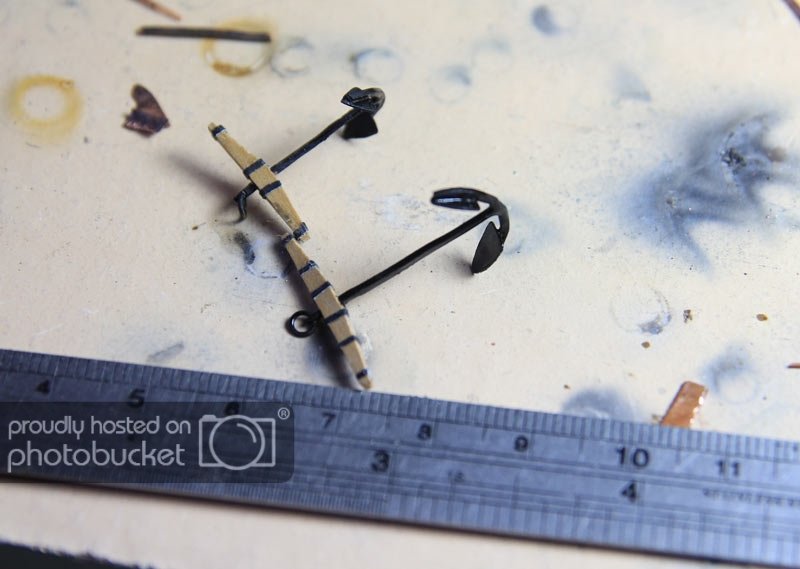
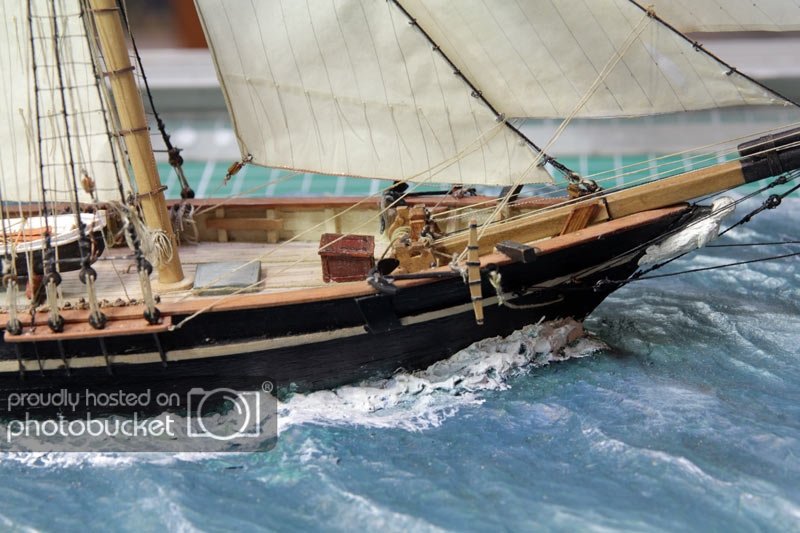
here she is.
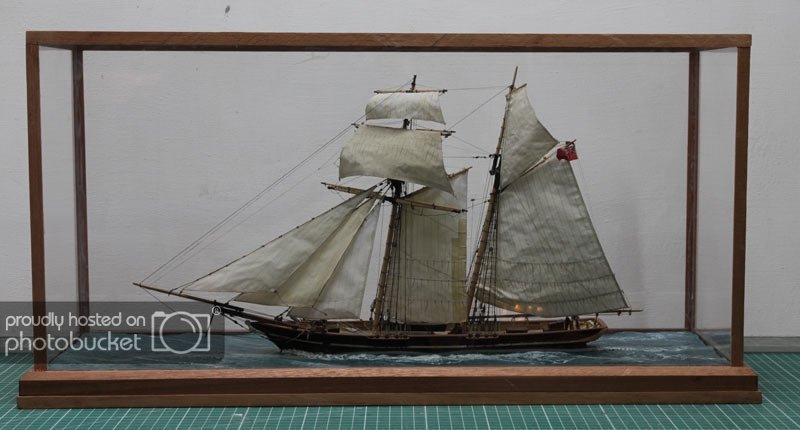
Thanks for looking!




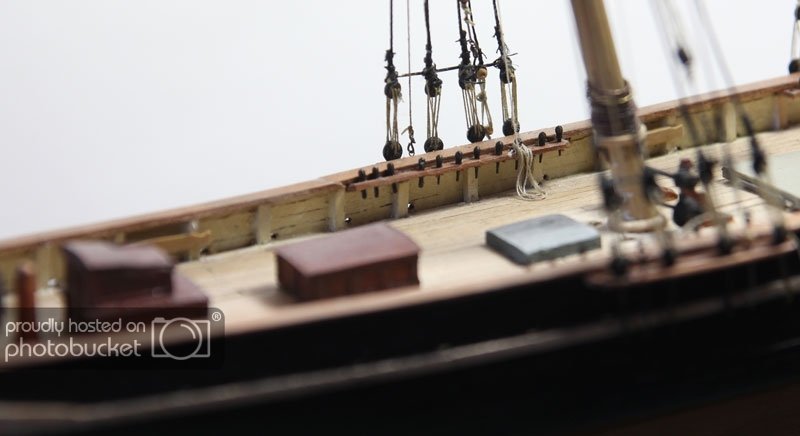
Scottish Maid by JesseLee - FINISHED - Artesania Latina - 1:50
in - Kit build logs for subjects built from 1801 - 1850
Posted
She probably was paneled being a bit of a flash job. In MacGregor's book there's an Artist's impression of her that shows paneling. However, no one knows what form the paneling would have taken, but it would have been rather more delicate than the kit suggests....